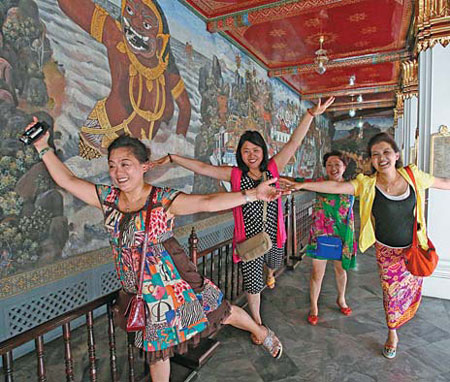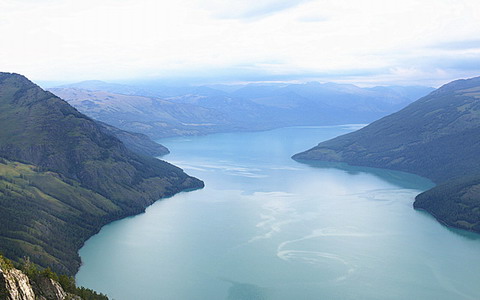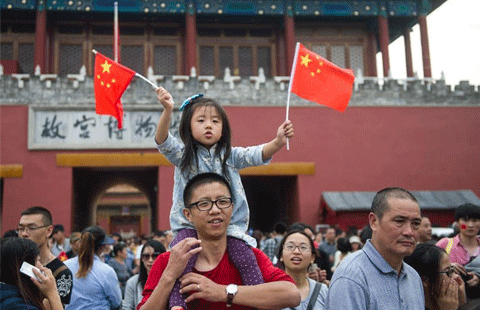Destination desolation
By Erik Nilsson ( China Daily ) Updated: 2014-10-04 07:48:06|
 |
|
Chinese tourists visit the Grand Palace in Bangkok in May. [Photo/Agencies] |
"The changing behavior of Chinese travelers is the result of the previous 10 years of travel experience," he says.
Many took their first international trips in Southeast Asia and now seek something new, Xu says.
And more countries better realize Chinese have been the world's biggest spenders on international tourism in the past five-and especially the past two-years, he says.
"Now, (Chinese) are going to Europe and North America."
Xu points to Maldives as an example of a country that early on devised savvy for courting Chinese.
"Nobody would've guessed Maldives would become (a major) beach tourism destination for Chinese 10 years ago," he says.
"It all depends on how you market to the Chinese. Maldives has made great efforts to effectively penetrate the Chinese market."
Southeastasiatrip.com product manager Peggy Lyu explains: "The impact (on Southeast Asia) can be interpreted as a relative growth of Chinese traveling to other countries. Take South Korea and America, for instance, bringing in more (Chinese currency) to their shops, hotels and restaurants."
South Korea has emerged as Chinese tourists' No 1 international destination as Southeast Asian visits decline, with Japan as a close second, following a 2012 dip due to sour relations.
China accounts for about 40 percent of Korea's inbound tourists, compared to 23 percent two years ago, Hong Kong Polytechnic University's tourism professor Brian King says.
"The relativities are important," King says.
- Tourist income of Tian’e in the first eight months reaches 760 million yuan
- Tourist sites go unconventional on admission tickets
- Tourist ticket prices controversial ahead of holiday
- Fengshan listed in 'China’s Most Beautiful Tourist Cities in 2014'
- Possible admissions hike at tourist sites ahead of National Day Holiday
- Sheshan National Tourist Resort boasts best theme park facilities
|
|
|
|
|
|
|
|



















 Raymond Zhou
Raymond Zhou Op Rana
Op Rana Berlin Fang
Berlin Fang Zhu Yuan
Zhu Yuan Huang Xiangyang
Huang Xiangyang Chen Weihua
Chen Weihua